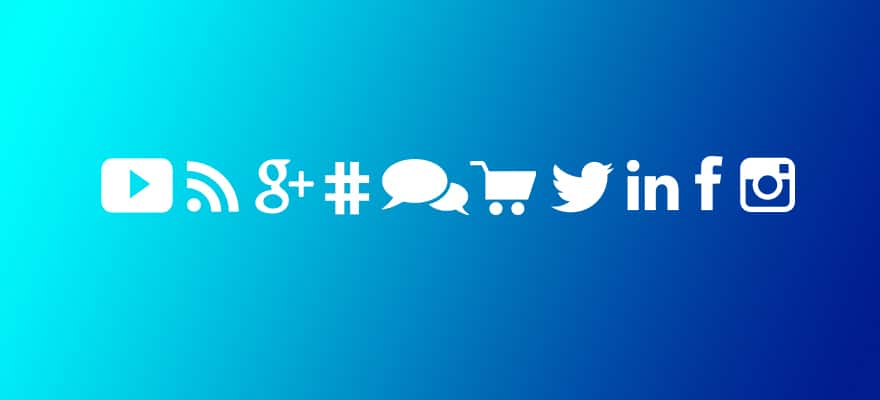This guest article was written by Dan Leubitz who is the CTO of INNITEL telecom.
Think back, for a moment, to the very first time you saw a webpage. You opened a web browser – probably Netscape Navigator – typed in some characters and, for the first time, saw the Web in its infancy.
Your first email experience was probably pretty close to the same thing. You bumbled through addressing the message; using foreign symbols and nomenclature like @ and .com. You probably composed the email just like a written letter and thought for minutes on end about how to come up with the perfect subject line.
Nostalgia is fun, isn’t it? But, consider this:
Why are you basing the core of your affiliate marketing strategy on something so old that it allows for that nostalgia? We’ve been surfing the web and sending emails for over two decades now – isn’t it time that your affiliate marketing efforts caught up and took advantage of new modes of communication?
The Current State of Affairs

Dan Leubitz, CTO, INNITEL telecom
It’s easy to understand why you might be comfortable with the results you’re seeing – no one is stirring the pot. Everyone is pushing the usual suspects – email, landing page, SEO, SEM – and they’re keeping expectations tempered at a stagnant and paltry three percent action rate.
Let’s take a quick look at what that three percent gets you.
Landing Pages
For every 300 visitors you get to your landing page, you’re perfectly happy when nine fill out the form or add themselves to your distribution list.
Nine. Out of 300.
What happens to those nine precious Leads is now in the hands of your sales team. A good sales team with a good product should be able to make the Hubspot average of 5-15%.
5-15% conversion doesn’t sound half-bad, does it? But, when you’re starting with nine leads, that only means one conversion. Remember, it’s 5-15% of your leads; not your visitors.
One single conversion out of the 300 that saw your landing page. Still happy?
How About Email?
“An email goes straight to a recipient’s mailbox! They get an alert and everything! They’ll have to see my message, won’t they?”
Well, how many sales emails do you open?
Now, granted, financial and gaming industries do have better than average responses on marketing emails – upwards of 20% open with a 3% average click rate. So, out of 900 emails sent, about 180 will actually open the email. Nine will click through and one will sign up for an account or spend some money.
One out of 900.
“But,” you might be saying, “we’re going to send out a lot more than 900 emails.”
That may very well be the case. But, statistically speaking, your conversion rate will stay about the same. So, if you want to send 20,000 emails for less than 18 conversions, go right ahead.
So, What’s the Answer?
Glad you finally asked.
Here’s what’s not the answer: Changing the font in your email. Doing three days’ worth of research into a better subject line. Making your landing page images bigger.
If you’d like to keep spinning your wheels looking for a solution based on the same way you’ve always done things, then you’ve already lost. The key here is to finally start to innovate.
The key is to consider voice.
Aaron Friedman, Director of Innovation of FiveBlocks, a digital consulting and reputation management company, adds, “Innovation means sensing the change in the industry and moving with it. Or better yet, staying ahead of it. Current methods of reaching your target market in digital marketing have to continuously evolve to the behavior of your target demographics, let alone the drastic changes in the industry. SEO, PPC, and Email all drive traffic and help brand discoverability, the goal often being lead generation.
All this is great, but fast response improves your odds of conversion. Without it, you are leaving everything to chance. Companies, who can respond quickly will be greatly rewarded by making that instant connection and reaching customers at the moment of need. When a voice is utilized in conjunction with digital marketing, you change the game and improve the odds.”
As such, when integrated into the rest of a comprehensive affiliate marketing campaign, voice capabilities can have a massive impact on not only productivity, but the conversions that come with an increased ability to reach out to and connect with pre-qualified sales.
Take, for example, that same landing page we discussed earlier. As leads sign up and provide their contact information, you’ll find that a voice broadcast generally has a three percent conversion rate. It’s what happens with that three percent, however, that makes all the difference.
When a lead is contacted via a voice campaign and is presented with the option to act on the call (press ‘1’ for sales, for example) that action is the same thing as a “click.” So, of 900 visitors, nine will have acted by pressing ‘1’. For those keeping up with the math, that’s already 9 times over both email and landing page efforts.
However, when you add enhanced VoIP capabilities like a Cloud -based PBX with a predictive dialer, you can effectively raise the productivity of your sales agents by 400%. This is because the predictive dialer is only going to contact the leads whose information was submitted from the same efforts that led to the creation of the landing page.
Only live calls are sent to available agents which means that your agents aren’t wasting time waiting for calls to be connected – they are constantly speaking with pre-qualified leads who want to be contacted by your agents. They volunteered their information and were waiting for your call. All you have to do is close them.
The possibilities don’t end there, however. Make “unknown number” a thing of the past and link a proper CLI to your predictive dialer campaign so the recipient sees that the call originated from a “local” area code.
Less than a third of phone users answer their devices when “unknown number” or “withheld number” flashes across their screen. However, 54% will answer the phone if an actual number comes up – regardless of whether it is one that they are familiar with. They don’t have to know who it is – they just want to see a local number.
Perhaps most interestingly, however, is the fact that lead conversion continues to increase proportionately with the number of outbound calls.
Pulling It All Together
Hopefully by now you’re starting to see that it’s not so much the idea of how many leads you have, but instead, it’s what you do with them when you get them. Better qualified and better quality leads that experience a modern sales funnel like a voice-powered marketing campaign run by a predictive dialer are far more likely to become customers. You’ll have fewer missed calls, fewer disconnects, higher conversions, and a significantly more efficient sales infrastructure.
Or, for those who prefer a more concise explanation: you’re going to make more sales.
















